Title of Project
Health promotion and the Combat of Endemic Diseases in Wadabooshar Village: A Real Model of Community Empowerment.
Project Start Date
November 25, 2016
How Long Have I been Involved with this Project
Two years
Project Context and Goals: Problem, Issue or Opportunity Addressed
Why is this significant?
This project was conducted at Wad-Abuoshar Village, located 113 Kilometers east of Wad Medani (Capital of Gezira State), with a population of 4,000.
The problems of the village can be classified into:
- Health problems: In a period of two weeks prior to our study; the incidence of Malaria was 58 percent, Typhoid Fever was 21 percent, Urinary Tract Infection was 33 percent, gastrointestinal problems were 42 percent and 20 percent were diarrheal disease in children under 5 years old. There was only one midwife in the village, who provided that the prevalence of alcohol consumption increased significantly. Also, they reported high prevalence of hypertension at 38 percent and frequent use of fattening pills and skin whitening creams among the girls in the village.
- Services problems: There is no health center in the village, the only medical assistant provides the medical care and there was difficulty with transportation. In addition, there were a lack of a healthy market. No high school. The dental unit was not functioning nor the cleaning vehicle and or garbage collection.
- Environmental and community problems: The village residents are not interested in cleanliness, there was a presence of animals inside the house, lack of shady and fruitful trees in the village, absence of healthy place to slaughter and sell meat, vegetables and fruits are exposed in the ground surrounded by dirt, animal waste, and stagnant water. Teen marriage and relative marriage are common. There were problems, disagreements, and disputes with the residents of neighboring village, which prevents them from getting the benefit of available various health and social services.
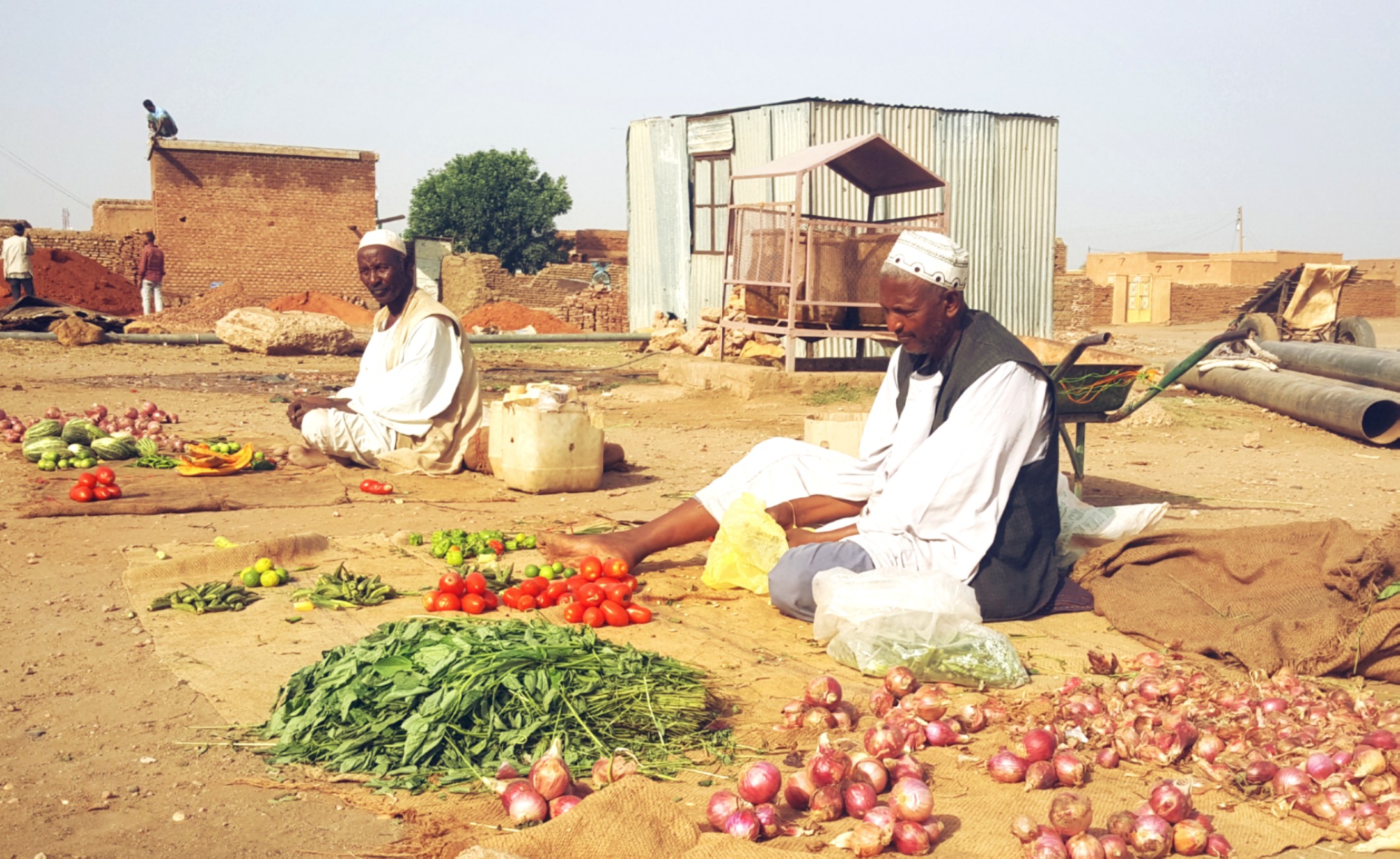
Before the intervention: The market shows vegetables exposed dirt from the ground and surrounding environment.
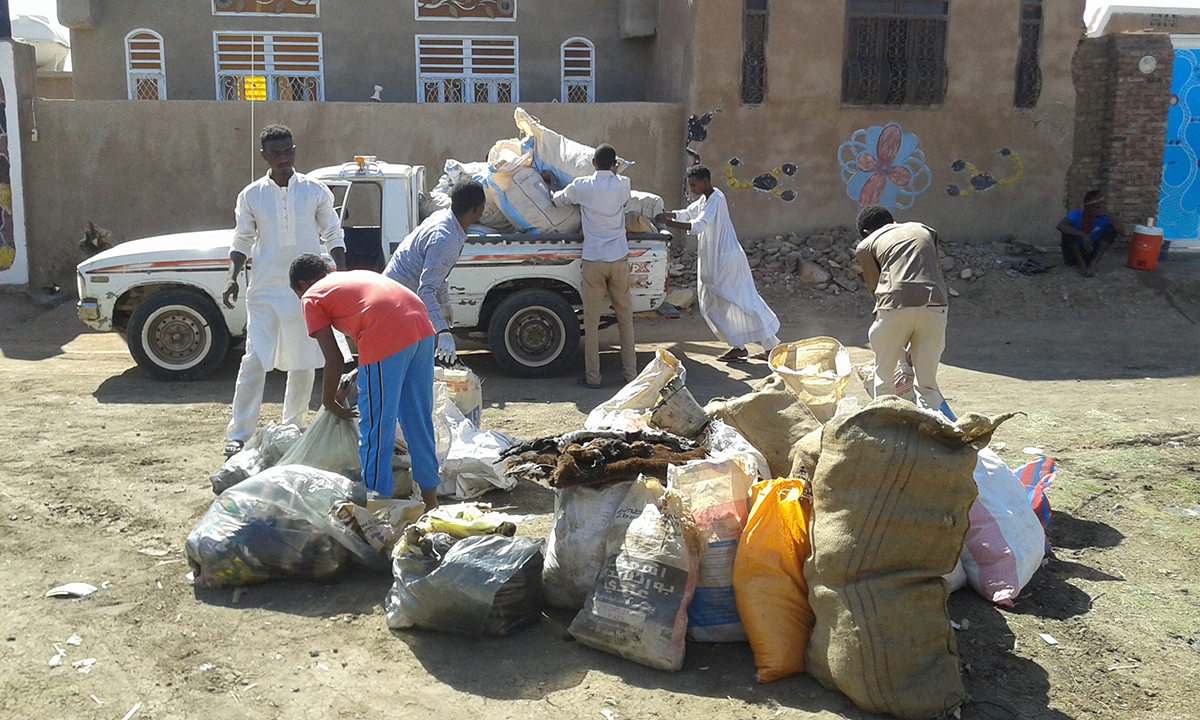
After the intervention, an active simple waste disposal system consisting of a donkey cart and a vehicle in use.
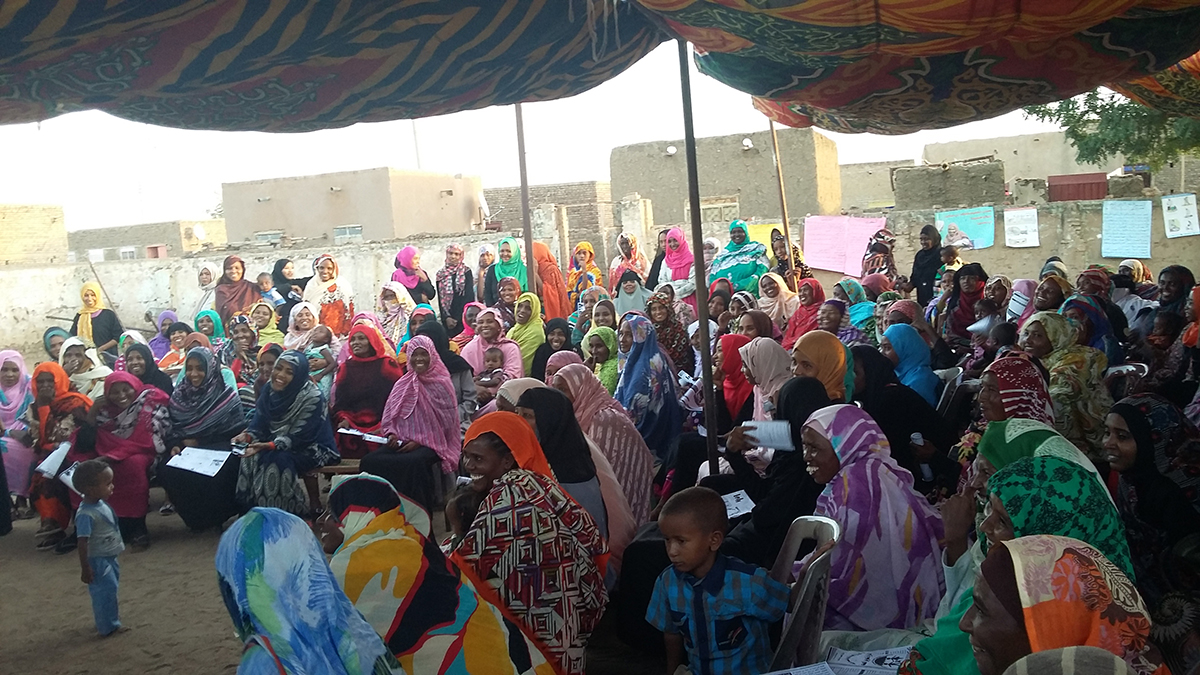
Massive health education program.
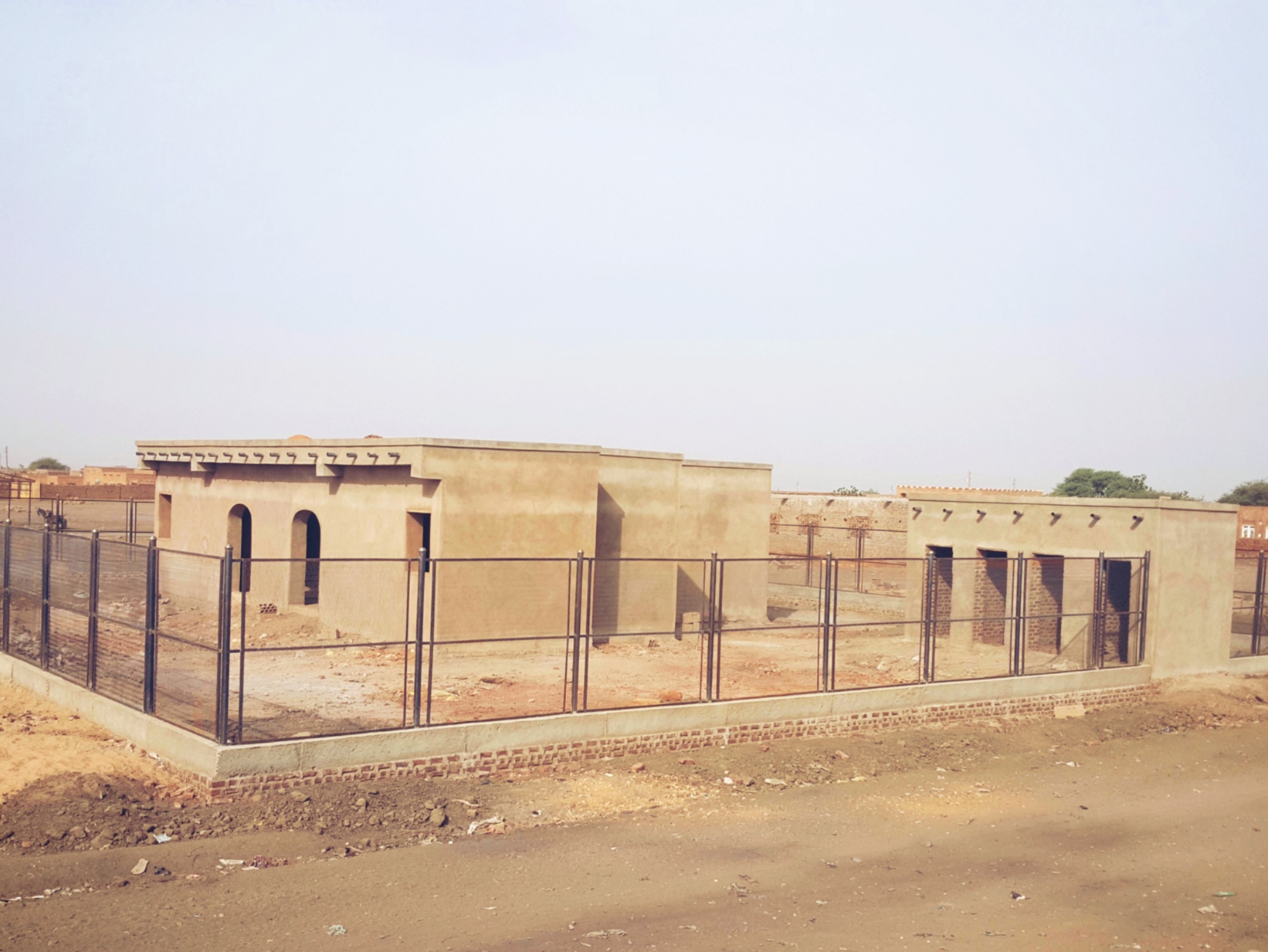
The newly established health center during the project intervention.
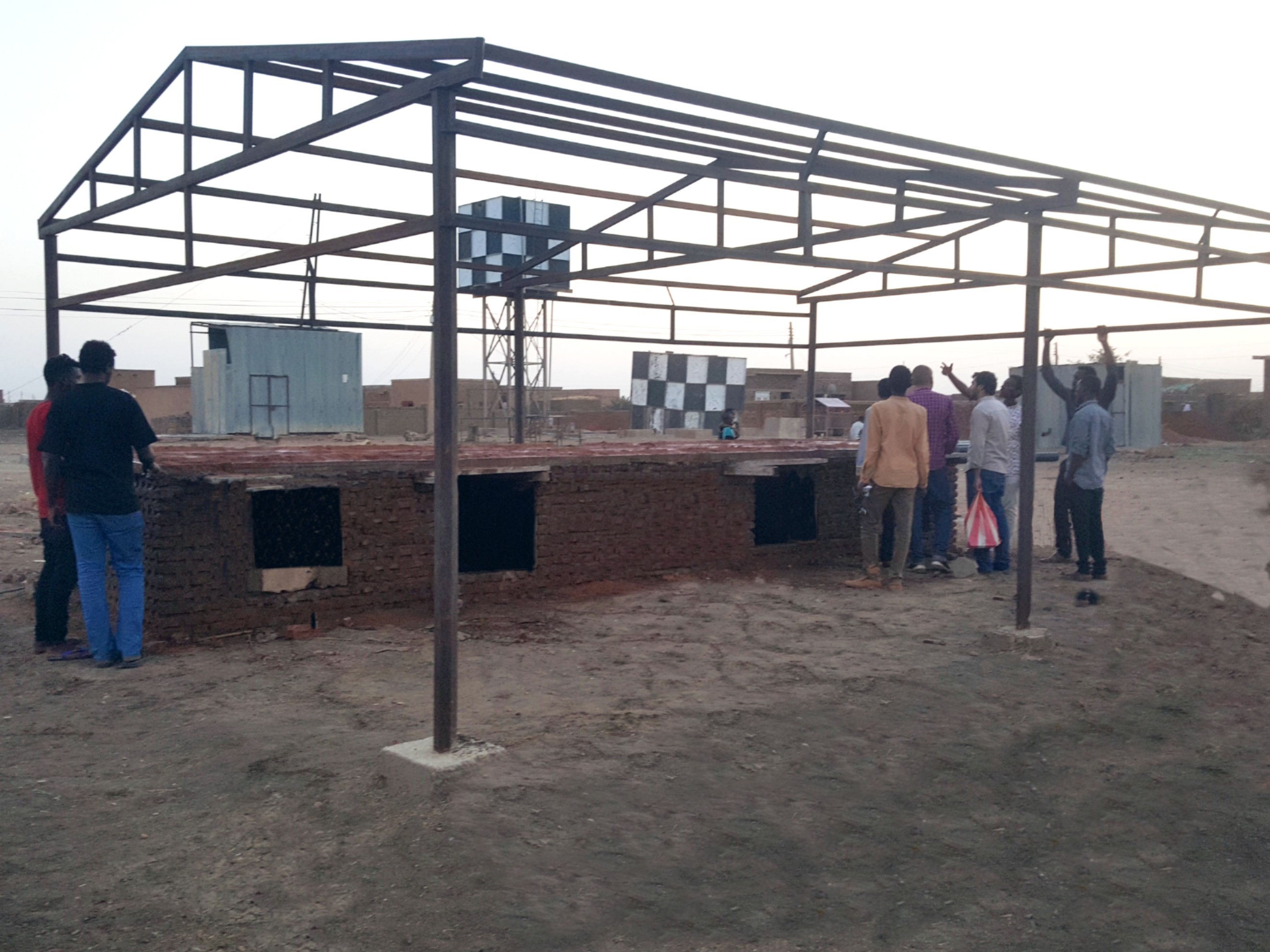
The newly established healthy market during project intervention.
Credit: All images courtesy of Yussein Elhussein
The general gall of the project is health promotion and the combat of endemic diseases, reduction of morbidity and mortality rates, and to provide primary health care services.
My Role in this Project
How Much Time and Effort Have I Contributed to the Design,
Implementation, or Continuation of the Project?
This project was developed throughout three phases during academic courses within the curriculum of the University of Gezira, Faculty of Medicine in “The Interdisciplinary Field Training, Research, and Rural Development Program (IDFTRRDP).”
I was a leader of a group of 22 medical students. Each phase was four weeks in length and we stayed in the village for a week during each phase except for the second phase. In the first phase (November 2016) all time and effort have been put together to study the village and discover its problems. We observed the village and studied the community, health system, and health status by conducting home surveys, analyzing the data, detecting the problems, and classifying them. In this phase, I helped by filling out the questionnaire forum by "SPSS – v20" to analyze the questionnaires and chart the results, project, and discuss them. Also, as a group leader I prepared a seminar presenting the work for colleagues, I wrote a report for the course coordinator. I helped in designing the criteria for priority problem selection and designing the intended interventions and projects.
During the second phase (December 2016 - November 2017) we designed the intervention after creating a priority listing of the problems and I wrote a proposal of the project with a rational budget. Then we went to the village and applied planned intervention. I contributed in designing a "criteria of prioritization (Scoring System)" for the problems to guide the project for the most serious problems, and so the application of the intervention could achieve its objectives. I headed a meeting with the local committee of citizens and community leaders in which we discussed the project, its components, justifications, objectives, strategies, plan of working, and the expected results and outcomes. I coordinated the implementation with the related authorities, including: visits, meetings, writing proposals, and fundraising. The authorities included: University of Gezira, Faculty of Medicine, the "ministry of health" in Gezira state, "health services administration" in the locality, the local committee of citizens, "youth union and women union in Wad-Abuoshar Village," administrators of schools, and "Sudanese Red Crescent Society" and other charitable associations.
In the third phase (December 2017), we assessed the effects of the interventions by running the same sample survey and comparing the results. We measured the incomes, processes, outcomes, and impact indicators to assess the successful projects. I designed a questionnaire aimed to directly assess the project, it was completed by the community leaders and the residents, I also analyzed the survey questionnaires, comparing the results to phase 1. Also, as a leader of the group, I prepared a seminar showing the work to colleagues, and I prepared a draft report for the course coordinators.
In between the period of phases I helped with fundraising from charitable associations and other donors, with the rest of the budget from the students and the village’s committee.
Later after the end of this course, I continued to visit the village to ensure that the project was doing well.
Project Innovation and Creativity
This project represents a model of community empowerment as we led the community initiatives through their full participation in all stages of thinking, planning, implementation, management, and evaluation of the project and encouraged them to develop their health system on their own. At a cost that they can afford to maintain the development at every stage, and in the spirit of self-reliance and self-determination. It is characterized by multi sectors and authorities. So, we helped in strengthening the cooperation between various authorities, building active partnerships and relationships for development. The implementation was based on prioritizing the problems through a scoring system which includes importance, danger, urgency, the community concern, solvability, sustainability, and cost. The project was designed in an integrated approach. The main integrated components were: establishment of a health center, establishment of a healthy market, massive health education program (about the infectious, endemic, and chronic diseases, bad habits, beliefs, and behaviors), foundation of a simple, active, and permanent waste disposal system, planting 400 fruitful and 20 shady trees, training volunteers from the village on first aid, nursing skills regarding emergency situations, providing two electronic devices to facilitate the periodic follow-up of hypertensive patients in the village, and fighting malaria through periodic spraying with pesticides and using other means of control.
Our interventions
These interventions aim to support health through diagnostic and therapeutic aspects for the village in a permanent manner, reduce of travel related to seeking medical care, increase the level of health awareness (about infectious, endemic, and chronic diseases, and eradication of bad traditional habits), train volunteers to become midwifes, provide plantings for the village, provide a stable source of income to support the needs of the village, and especially support the health needs of patients with disabilities and patients with chronic diseases. Also, to improve the standard of living of village residents, especially the sellers, by supporting the commercial movement inside and outside the village, maintain a healthy environment, minimize the incidence of infectious diseases (malaria, typhoid fever, urinary tract infection, gastrointestinal diseases and diarrhea, reduce malaria complications especially for pregnant women and children under five, enable training for village volunteers in first aid, nursing skills and how to deal with emergency situations. Empowering the community by encouraging and generalizing the idea of a pilot project, which aims to establish projects that enable the village to provide a steady income to help solve its health and social problems.
Measurement of Project Impact on Community Health
Regarding project evaluation, we compared between the data that we collected in phase one before the interventions with the third phase. We assessed the effects by running the same sample of survey and comparing the results. The outcome was measured. The impact indicators to assess the successful projects was settled. I designed a questionnaire aimed to directly assess the project, it was completed by community leaders and the residents. I also analyzed the survey questionnaires, comparing the final results to phase 1 results. Also, we organized a charity health day with participation by practitioners of internal medicine, pediatrics, obstetrics and gynecology, dental clinics, and included a comprehensive lab for testing and drugs supply. We used the results of these tests and diagnoses to measure the change in the diseases distribution and behaviors of the patients. We also made observational checklists to evaluate the project.
The following figures reflect the impact of the project, compared before and after the interventions. Percentage of families who get rid of waste by burning or placing it randomly in the village decreased from 78 to 21 percent, while families that got rid of the waste by placing it to be picked up by the transport vehicle raised from five to 54 percent. The presence of water pools around the house decreased from 33 to 14 percent. The concept of mothers with children under the age of five has improved on absolute breastfeeding and the percentage of those who have not heard about it has dropped from 40 to 13 percent. Women vaccinated against tetanus during their last pregnancy increased from 65 to 87 percent, and women who take folic acid during pregnancy increased from 73 to 94 percent. Diabetics who follow a periodic follow-up once a month increased from 22 to 59 percent, incidence of malaria, diarrhea, pneumonia during the two weeks before the visit decreased from 58 to 16 percent, 42 to 21 percent, and 40 to 11 percent respectively. The use of insecticide-impregnated mosquito nets for pregnant and children under five years of age increased from 51 to 78 percent, while only three percent did not use nets, and the rest used other means of control such as spraying with pesticides. There were no maternal deaths during birth and the incidence of complications decreased from four to one percent. The attitude of the hypertensive patients to control their illness (practice physical activities and exercise) rose from 51.55 to 87 percent. Individuals following a special hypertensive diet increased from 71 to 90 percent. Avoidance of smoking, coffee/tea, and obesity changed from 74.3 to 86 percent, 49.2 to 73 percent, 37.2 to 79 percent respectively. 28 percent were used to going for follow up every month and used to recording the results to measure blood pressure. The percentage of hypertensive patients on regular treatment increased from 68 to 91 percent, and the rate of periodic monitoring of blood pressure increased from 28 to 72 percent by using electronic pressure devices according to the project.
Regarding the results of the two therapeutic days, the presence of UTI, Pneumonia, Malaria, Gastroenteritis, and Giardiasis decreased from 27 to 13 percent, 34 to six percent, 11 to four percent, 14 to zero percent, six to zero percent respectively. Regarding the healthy market, we found that the vegetables and fruits and presence of a suitable place for selling increased from 13 to 100 percent. Exposure to the ground decreased from 96 to zero percent. Waste in the surrounding environment decreased from 78 to six percent. Contamination decreased from 57 to 11 percent. Regarding project evaluation from the perspective of the community leaders 45 copies of the questionnaire were completed by part of the local committee of citizens and youth and women unions with 100 percent very satisfied, 96 percent said it was very useful project, 98 percent said it was appropriate, necessary, and fulfilled the community’s needs and maintained the healthy environment, 100 percent said it was empowering the community to seek solving its own problems and maintaining the sustainability of the project development. This project contributes to solving health problems, it also meets the community needs, and enhances the health culture.
Sustainability of Project
Sustainability is a major indicator for project success, so as we designed our project we also were concerned about the sustainability and continuation of project components. The first component of our intervention established a health center: sustainability was assured by registration of the health center in the ministry of health, a committee was formed composed of the community leaders including the local committee of citizens and youth and women unions who were responsible for follow up progress in the building of the center and regular assessment, follow up appointments of the health staff, and providing them with housing in the community to contribute to their stability.
Regarding the market; the land has been authenticated and registered with the local citizens committee, as well as the formation of a committee of community leaders responsible for supervising the market, collecting the monthly subscription from the sellers, which represents a source of fixed income that contributes to the development of the market, increasing the sales places, and supplying the people with special needs and patients with chronic diseases. To address controlling blood pressure a committee of community leaders was formed and trained on the use of electronic blood pressure meters. We also provided information about hypertension signs, complications/natural levels, etc. This committee is responsible for listing the contact information of hypertensive patients in the village, allocating one day of the week to contact all patients for periodic monitoring of blood pressure, allocation of a booklet for each patient to record their measurement, giving advice and transferring patients to the doctor in the case of high or very low blood pressure readings, collection of contributions and purchases of new equipment, all of which ensure continuity of the project.
To minimize the incidence of malaria a committee of community leaders and village health officers has been established. A malaria technician is responsible for health education. It has been agreed with the local health department and the Ministry of Health in the state to provide materials and spray pumps to spray the village with pesticides in each period to prevent reproduction of mosquitoes. The plantings in the village will be supported by a responsible committee to follow up the growth of trees and watering, as was agreed with an agricultural expert from the Department of Agriculture and Horticulture in the locality in addition to providing them with instructions and guidance on trees, and in the future will be allocated agricultural land to plant fruitful trees and return to support development projects in the village and the health center and needy patients.
To support first aid 20 people were trained including school teachers and youth at the sports club. Some of them were from the general population of the village. The school students and football players in the stadium were the most vulnerable groups and it was agreed that they would teach others from time to time to maintain the sustainability. The massive health education program is sustainable, as the health center works, the medical staff gives health education as a part of their job description and we also encouraged active community leaders to continue health education programs and campaigns. The foundation of a simple, active, and permanent waste disposal system’s sustainability was made possible by providing a donkey cart, and employment of a worker from the village to take care of the donkey, collecting the waste two times per week, and burning it outside of the village. The worker has been authorized to use the donkey cart for his own benefit the rest of the week, also he collects weekly taxes from every house as a salary, and a committee of community leaders was formed to follow up and maintain the sustainability.
Diffusion and Extension of the Project
I helped in communicating and extending the project by presenting seminar sessions to our colleagues in the faculty, I also conducted a lecture about project management using this as an example of a successful project for the 2nd-year batch medical students that was supervised by the head of family and community medicine department in the faculty. This project was also presented as an exhibition to all medical students, staff members, the dean of the faculty, the university manager, and other stakeholders. I also wrote a report about the project and it was given to the community medicine department. I am now applying to this (the 2018 TUFH Competition) competition and exited to extend this experiment and model project worldwide.
Why Does this Project Work? What Can Others Learn from This Experience?
The project works because it was achieved through applying the primary health care concepts in community leading initiatives and community empowerment, it also enhanced the role of multi sectorial approach in project success. The project was implemented in a clear methodology and strategic plans, the community was involved in all stages of the project: selection, planning, implementation, supervision, monitoring, and evaluation. The society has been mobilized and empowered by strengthening and encouraging it to solve its various problems, it also enhanced the role of sector integration in the success of the project and creation of relationships between different institutions and society. It demonstrated that health promotion and disease prevention have a role on socioeconomic development, so it solves the village’s basic problems. One of the main reason is raising awareness of the villagers as they showed great interest in developing themselves in various fields.
What Was the Most Important Element of the Project that Led to the Huge Improvement of the Community Health?
This project was designed in an integrated approach, which helps a lot in project success and the huge improvement of the community’s health. The project works because it was achieved through applying the primary health care concepts in community leading initiatives and community empowerment, it also enhanced the role of the multi sectorial approach in project success. The project was implemented in a clear methodology and used strategic plans, the community was involved in all stages of the project: selection, planning, implementation, supervision, monitoring, and evaluation. The society has been mobilized and empowered by strengthening and encouraging it to solve its various problems, it also enhanced the role of sector integration in the success of the project and creation of relationships between different institutions and society. It demonstrated that health promotion and disease prevention have a role on socioeconomic development, so it solved the village’s basic problems. One of the main reason it was successful was that it raised awareness of the villagers as they showed great interest in in developing themselves in various fields.
Anything Additional You Would Like to Share with Readers
This abstract reflects great efforts done by medical students, it is also a great model of community empowerment for health promotion. I have to mention that students have an important role and impact on community health as they helped a lot by leading the community initiatives towards health promotion throughout different programs, projects, and opportunities. In general, not only medical students can do this but it is the responsibility of all youth to serve our communities with all kinds of help that we can contribute. We have to be socially accountable and responsible towards the community and this cannot be achieved unless all the sectors, authorities, and community leaders cooperate and build extended partnerships together to reach to the dream -- health for all and all for health!
Author bio
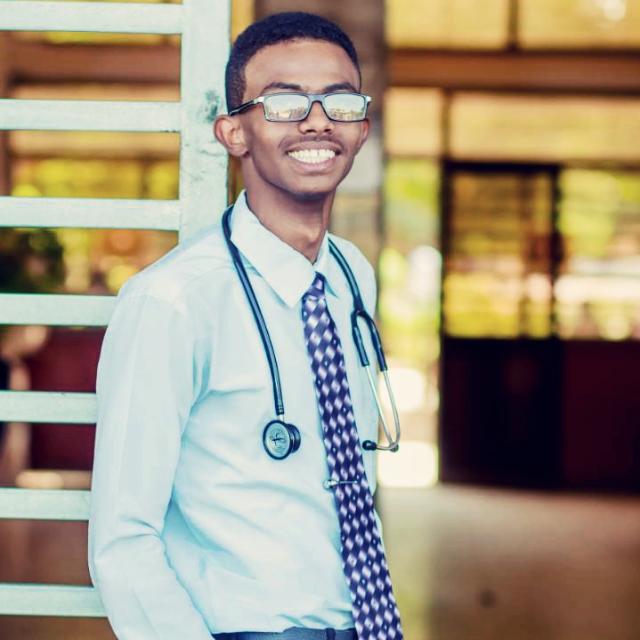
Photo Credit: Monzir Abdelmonim Osman, Kapoor Photography
Yassein Elhussein is a 20-year-old, fourth-year medical student at the University of Gezira, Faculty of Medicine, Sudan.
Yassein’s posts and leadership experiences include:
- Acting president for Gezira Medical Students Association (GMSA): 2016-2017.
- Scientific secretary of Gezira Medical Students Association (GMSA): 2017-2018;
- Deputy Secretary General of Gezira Students network organization – G.SNO: 2017-2018;
- Financial Secretary at Safety Motherhood and childhood friendship Association: 2017-2018;
- Training division Director at Sudanese Medical Innovation community SMIC: 2017-2018;
- Local Member organization (LMO) MedSIN-GMSA president at MedSIN Sudan at IFMSA – 2017-2018;
- Human rights trainer at International Federation of Medical Students’ Association IFMSA – 2017;
- President of Hayat Charitable Association 2017-2018;
- Member of Accreditation committee, university of Gezira, faculty of medicine 2017;
- Vice head of Media at Hayat Charitable Association 2016-2017;
- Trainee at Khartoum International Summer School KISS: 2017;
- Events “symposium” organizer at Royal College of Physicians of Edinburgh RCPE: 2015-2017;
- Head of Media at Sudanese Medical Innovation Community SMIC: 2016;
- Member of Student Assessment committee at Education and researches development center (EDC), University of Gezira, Faculty of Medicine;
- Volunteer at TEDx Wadmedani;
- Member of The Network: TUFH 40th Anniversary programming committee (TUFH Australia Conference 2019);
- Member of The Network: TUFH 40th Membership committee (TUFH Australia Conference 2019);
- Presenter in World Summit on Social Accountability, The Network towards Unity for Health (TUFH) conference in Tunisia April 2017; and
- Winner for SNO-GEMx international exchange program 2018, in UHL.


